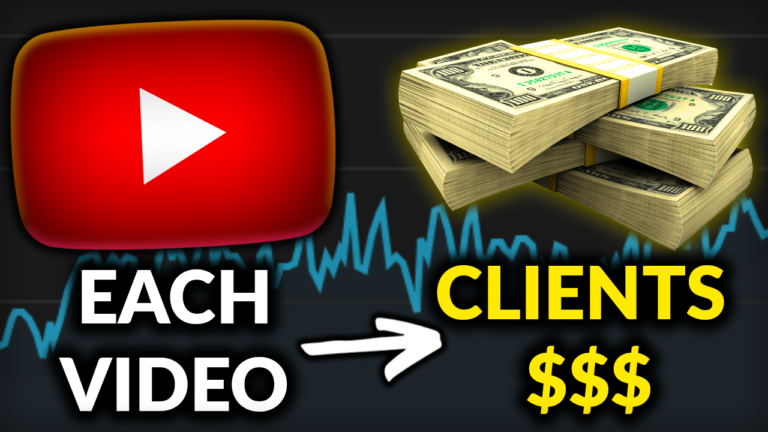ENGLISH or Your NATIVE Language for Your YouTube Channel?
If English is NOT your first language, what language should you create videos on your YouTube channel?
English, or your native language or can you mix?
I get it, you’re torn.
I faced the same dilemma when I was launching my 2 YouTube channels.
I also coach my YouTube student who asked me this very question
In this video, I’ll share my experience & what I told my student so you can make an executive decision for your channel.
Choosing the correct language will significantly increase the chances of your channel’s success!
Which language should I use for my channel?
So here’s your option. You can create your YouTube videos in:
- English
- Your native language (Chinese, Indonesian, Malaysian, Thai, German, etc)
- Multiple languages on one channel
So what would you do?
Here’s my answer: Pick the language of your target audience.
Who’s your target persona? AKA, who are you creating videos for?
If your target audience speaks English, then do English.
If your target audience is your fellow countrymen and speaks in your native language, then, there’s no point doing it in English.
So I’ve compiled this convenient table to help explain this:
| English | Your Native Language | |
| Who should create in this language? | If your target audience is people all over the world. E.g. Investing in US stocks | If your target audience is your fellow countryman E.g. Investing in stocks for Indonesians |
| Pros | You have a very large potential audience size RPM is also the highest | Could be easier & faster for you to produce content. An untapped market where there isn’t as much localized content |
| Cons | Fierce competition & saturated market. There aren’t many content gaps | You’ll have a smaller audience size. |
I’ll give you a live example, my YouTube coaching student plans to launch a YouTube channel about investing in worldwide stocks for Malaysians (he’s Malaysian).
He has excellent English & originally thought to create his channel in English.
So I asked him the golden question, who’s your target audience?
After a few back & forth, we concluded that he wants to teach Malaysians how to buy local & US stocks.
By that definition alone, it makes sense for him to create his new channel in the local language.
But he’s not so convinced.
So I told him that despite Malaysia being a multi-language country, the percentage of Malaysians who are interested in his niche & want to consume English content is relatively small.
If he does his content in English, he’s targeting a very small ‘total addressable market’
Total Addressable Market
For my student’s specific scenario, there’s a bigger addressable market for him if he were to create content in his native language.
Most of his target audience (which are Malaysians) prefer their local language over English.
To prove this, we looked at his closest YouTube competitors.
We saw 4 channels in the same niche that create local finance content in English, just like what he wants to do.
All 4 channels have sub counts at around 20k to 30k subs & their sub count have been stagnant at that amount for years.
This proves that the addressable market that likes that niche & want to consume the content in English caps out at around 30k people.
We then looked at 3 other YouTube channels in the same niche but in the local language.
Their sub count was easily 200k+ each!
So in my student’s case, this was the proof in the pudding to create content in the local language to have a chance to ‘blow up’ on YouTube.
If he were to do his content in English, and no matter how good he is, he’d limit himself to a small total addressable market of around 30k people.
Gaps in the Market
YouTube originated in the US in 2005.
As such, most early adopters of this platform spoke in English.
Chances are, if you want to create a video about something, there’s almost always an English video about it already on YouTube.
If you want to stand out in that crowded English market, there are only 2 options:
- Your info needs to be unique – which is hard to do as most topics are already covered in English. There’s little content gap to fill.
- Your content needs to be better than everybody else – this could mean better video quality, better editing, better storytelling, and a more likable persona.
Doing content in English means you have a potential worldwide audience, but you’re setting yourself up against a bigger challenge.
You’re going head-to-head against the top performers in the world.
It’s like choosing to play a game in hard mode.
On the flip side, if you were to do content in your native language:
- There’s not as much local content that exists, therefore, there’s a bigger content gap. All you have to do is fill in that gap & you’ll build an audience relatively quickly.
- You’ll be surprised at how many of your fellow countryman is craving for localized content. English content simply does not resonate with many people outside the US.
So, growing on YouTube is kinda like playing a game. Pick your level of difficulty.
Would you pick the hard mode or the easy mode?
Mixing Languages
But Helmi, people from my country are bilingual. They can speak both English & the local language.
Can my channel have a mixture of both languages?
The short answer is NO. Keep your YouTube channel to ONE language.
Let me tell you a personal story:
My first YouTube channel about personal finance was originally in English.
Then, I quickly realized that there are not many people in my country who like English videos.
So I experimented with my native language & those localized videos did significantly better than my English content.
But now, there’s a problem.
I’ve already built an international English audience and they don’t understand my local language videos.
On the flip side, my local audience doesn’t resonate with my English content.
So what happened is, that my audience got confused, and ultimately, the algorithm was also confused.
It didn’t know who to show my content to.
So no, you should not mix languages on your YouTube channel as it will 100% confuse the heck out of your audience & ultimately the algorithm.
Conclusion
You should be the one deciding on your YouTube channel’s language.
- Pick the language of your target audience.
- Doing content in English = hard mode. Doing content in your local language = easier mode.
- Do not mix languages in one channel as it will confuse your audience & algorithm.
I hope this video gave you some guidance on what language to choose for your YouTube channel.
This is a critical decision for your channel’s direction.
Once you figure out what language to be in, the next order of business is to come up with a solid content strategy.
In order to you to do that, watch this video right here.






